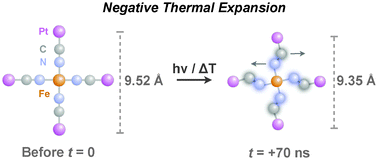Unusual molecular material formed through irreversible transformation and revealed by 4D electron microscopy†
Abstract
Four-dimensional (4D)

* Corresponding authors
a
Physical Biology Center for Ultrafast Science and Technology, Arthur Amos Noyes Laboratory of Chemical Physics, California Institute of Technology, Pasadena, USA
E-mail:
zewail@caltech.edu
b Département de Chimie Physique, Université de Genève, CH-1211 Genève, Switzerland
Four-dimensional (4D)

 Please wait while we load your content...
Something went wrong. Try again?
Please wait while we load your content...
Something went wrong. Try again?
R. M. van der Veen, A. Tissot, A. Hauser and A. H. Zewail, Phys. Chem. Chem. Phys., 2013, 15, 7831 DOI: 10.1039/C3CP51011E
To request permission to reproduce material from this article, please go to the Copyright Clearance Center request page.
If you are an author contributing to an RSC publication, you do not need to request permission provided correct acknowledgement is given.
If you are the author of this article, you do not need to request permission to reproduce figures and diagrams provided correct acknowledgement is given. If you want to reproduce the whole article in a third-party publication (excluding your thesis/dissertation for which permission is not required) please go to the Copyright Clearance Center request page.
Read more about how to correctly acknowledge RSC content.
 Fetching data from CrossRef.
Fetching data from CrossRef.
This may take some time to load.
Loading related content
